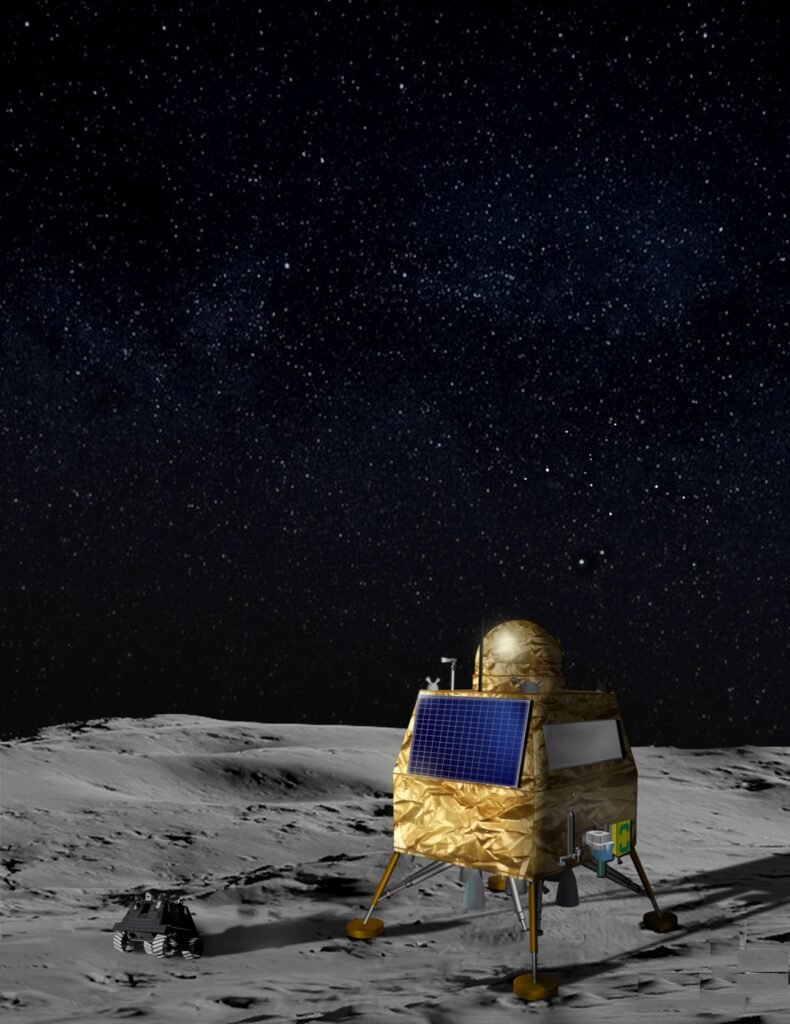Lunar Mission OB1

“Each lunar mission targets a landing ellipse in a region of interest based on the mission and payload requirements. For OB1, we are aiming for the lunar south pole”
Orbit Beyond plans to launch a south-polar lander in the 2029/2030 window, delivering up to 300 kg of customer payloads to terrain adjacent to permanently shadowed regions (PSRs). The mission is designed for day–night–day operations and will qualify three on-surface services for follow-on campaigns: Power-as-a-Service (night-survival power delivery and logging), Data-as-a-Service (DaaS) (on-surface storage, edge processing, prioritized store-and-forward), and a 4G/LTE surface network (coverage/throughput/latency performance).
On the surface, the lander and hosted instruments will collect high-value environmental and geotechnical datasets—illumination/thermal cycles, regolith mechanics, dust/plume transport, RF environment, radiation dosimetry, volatile/PSR reconnaissance—and provide standard mechanical/electrical/data interfaces for rapid payload commissioning. The mission will also assess helium presence at the planned sample-return site through in-situ assays (e.g., thermal-release tests with mass-spectrometric analysis) to ground-truth He-related proxies for the follow-on sample-return campaign.
A dual-orbiter segment augments the surface mission. Orbiter-1 (polar mapper) will perform mineral mapping and terrain/context imaging using multispectral/thermal-IR instruments and a laser altimeter to refine landing-zone and traverse planning. Orbiter-2 will provide continuous relay for the surface LTE/DaaS network and may host complementary sensors (e.g., radar/altimetry) to improve PSR/volatile models. Together, surface and orbital data produce standardized products and service-qualification reports (power delivery metrics, LTE coverage maps, DaaS data-throughput gains), establishing a repeatable blueprint for subsequent missions—including PSR science, resource prospecting, and sample return.
